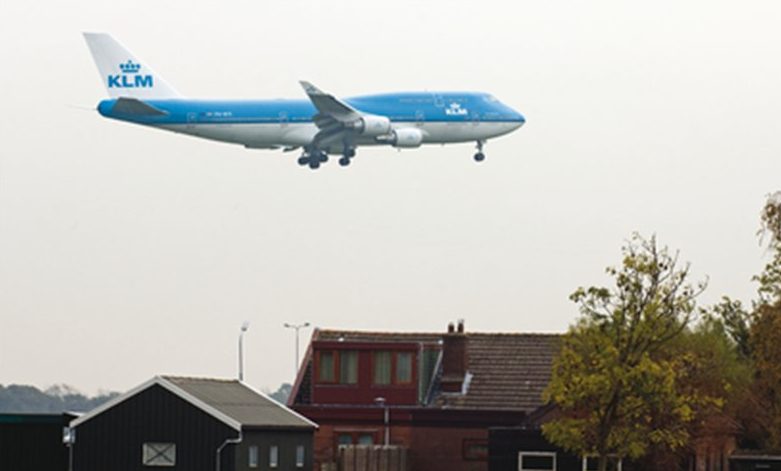
In densely-populated countries and in particular in large metropolitan areas, the presence of so much human activity causes all sorts of negative externalities, for example traffic noise disturbance. These externalities call for corrective measures by the government.
Economists have developed a number of procedures that provide reasonable estimates on the monetary value of some amenities and externalities.
In this research we developed a spatially-explicit hedonic pricing model for house prices in order to quantify the social cost of aircraft noise disturbance in monetary terms. While focusing on aircraft noise around Amsterdam airport in the urban fringe of the Amsterdam region, a key point in our analysis is that we account for background noise. We do this by taking multiple sources of traffic noise (i.e. road, railway and aircraft noise) into account simultaneously and by setting threshold values for all three sources of noise above which sound is generally experienced as nuisance.
Based on our regression results we conclude that a higher noise level means ceteris paribus a lower house price. Air traffic has the largest price impact, followed by railway traffic and road traffic. These model outcomes can subsequently be used to estimate the marginal and total benefits of aircraft noise reduction in the studied area around Amsterdam airport. We find a marginal benefit of 1 dB noise reduction of 1459 Euro per house, leading to a total benefit of 1 dB noise reduction of 574 million Euros.
Like all externalities, noise nuisance may be a reason for government intervention. When intervening, governments should take care about the size of the intervention. In practice, this issue is generally neglected. This line of research sets the first step towards determining the optimal size of government intervention in the case of noise nuisance near airports, more specifically in the case of Amsterdam airport. As mentioned above, we used hedonic pricing to establish the benefits of noise reduction. Furthermore, we developed a bottom-up cost function, based on alternative approach procedures, regional substitution of planes within existing fleets, early depreciation of noisy planes and reducing the number of flights. We then equate marginal costs and benefits to establish the optimal level of noise reduction, which appears to be slightly below 3 dB(A).
Publications related to Externalities – noise
| Beerda, E., Locatie, locatie, locatie. Interview met econoom Jasper Dekkers, Experiment NL Deel 3 – Wetenschap in Nederland, 3, pp.36-37, 2010. | |
| Transportation Research Part D | Lijesen, M., van der Straaten, J.W., Dekkers, J.E.C., van Elk, R., Blokdijk, J., How much noise reduction at airports?, Transportation Research Part D: Transport and Environment, 15 (1), pp.51-59, 2010. |
| SDU uitgevers | Lijesen, M., Dekkers, J.E.C., van der Straaten, W., Luchtvaart en geluid: naar een welvaartsoptimum. Hoofdstuk 12, in: Koetse, M.J., Rietveld, P. (eds.), Economische waardering van omgevingskwaliteit; casestudies en toepassingen in de MKBA, SDU uitgevers bv, Den Haag, 2010. |
| Ecological Economics | Dekkers, J.E.C., van der Straaten, J.W., Monetary valuation of aircraft noise; a hedonic analysis around Amsterdam airport Ecological Economics, Ecological Economics, 68 (11), pp.2850-2858, 2009. |
| EURONOISE 2009 | Dekkers, J.E.C., van der Straaten, J.W., A hedonic aircraft noise valuation study around Amsterdam airport, in: Proceedings of EURONOISE 2009, Edinburgh, Schotland, 26-28 October, 2009. |
| Dekkers, J.E.C., van der Straaten, W., Monetary Valuation of Aircraft Noise; a hedonic analysis around Amsterdam Airport, Tinbergen Institute Discussion Paper, Amsterdam, 2008. | |
| CPB | Lijesen, M., van der Straaten, W., Dekkers, J.E.C., van Elk, R., Geluidsnormen voor Schiphol, een welvaartseconomische benadering, CPB rapport, no. 116, Den Haag, 2006. |
